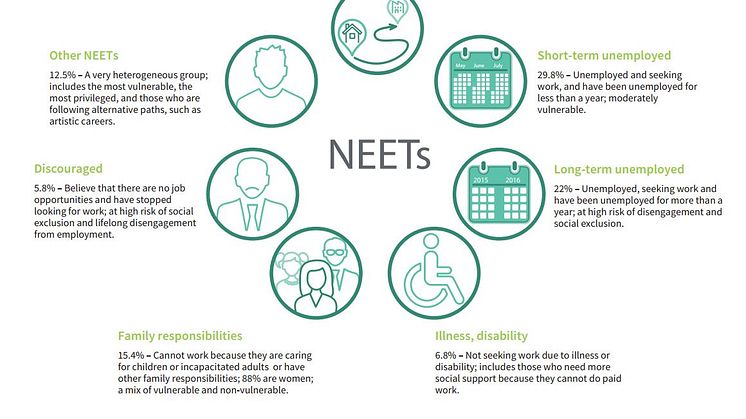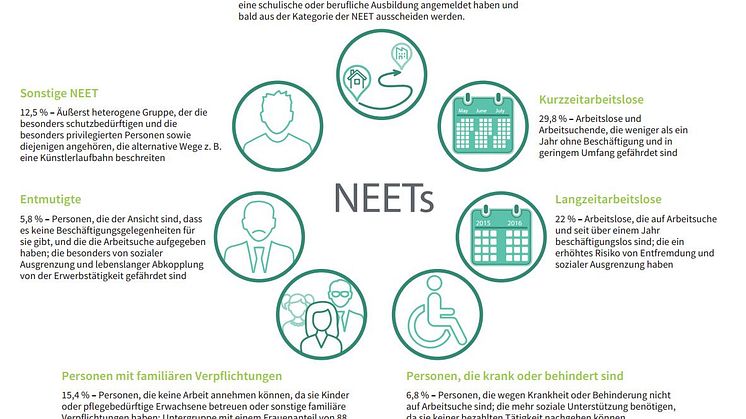
News -
Who are the NEETs?
The concept of NEET – young people not in employment, education or training – has been useful in enabling policymakers to better address the disjunctions between young people and the labour market. While the traditional labour market dichotomy of employed or unemployed is valid, it fails to capture modern school-to-work transitions and the legions of young people who are outside the labour market and not accumulating human capital and hence who may be vulnerable to a range of social ills. In 2015, some 4.6 million young people aged 15–24 were unemployed. This is just a subgroup of the broader category of NEET, which comprises 6.6 million young people, meaning that had the concept of NEET not found currency, 2 million young people would have attracted limited attention from a policy perspective. NEET has put previously marginalised populations such as young mothers, young people with disabilities and young labour market drop-outs back into the policy debate about youth unemployment.
NEETs is a broad category encompassing a heterogeneous population. Disentangling the subgroups within it is essential for a better understanding of their different characteristics and needs, and for tailoring effective policies to reintegrate them into the labour market or education.
Identifying the subgroups also aids in identifying who is most vulnerable to poverty and social exclusion. While individuals in the NEET category often experience multiple disadvantages, including a low level of education, poverty and difficult family backgrounds, the population of NEETs is made up of both vulnerable and non-vulnerable young people who have in common the fact that they are not accumulating human capital through formal channels.
Find out more: Living and working in Europe 2016






